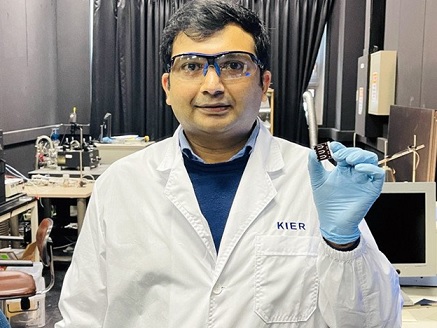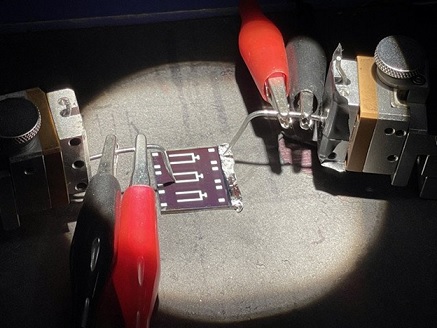Pakistani Scientist Sets Two World Records in Solar Cell Technology
By Suhail Yusuf
A research team led by a Pakistani scientist has developed a promising solar cell technology that sets two new world records of efficiency in the lab. The approach could help foster clean energy initiatives to combat the global warming issue.
Yasir Siddique – a PhD scholar at the Korea Institute of Energy Research (KIER) and the University of Science and Technology (UST), Daejeon, South Korea – has designed and fabricated solution-processed Copper Indium Sulphu Selenide (CISSe) solar cells.
The stable solution-processed, low bandgap CISSe device perfectly works as a single cell and could also be sandwiched with other thin-film solar cell materials having suitable bandgap as top cell-like recently emerging solar cell technology of Perovskite in tandem solar cell configuration.
The bandgap is the amount of energy needed to free the electron from any semiconductor; the lower the bandgap the more it produces electricity.

Dr Yasir Siddique with efficiency record holder solution based CISSe solar cell at his lab in KIER - Photo: Express Tribune

A close view of the solution based CISSe developed by Yasir Siddique – photo Express
Our sun is an average 150 million kilometers away but is a primary source of light and heat for our planet. Theoretically, the sun throws 1,360 watts per square meter of mixed energy on a surface directly facing it.
However, the sunlight on any solar cell largely reflected or passed through the structure and a few per cent of energy converts directly from sunlight into electricity. So, the power conversion rate, roughly called the efficiency is the degree to which a solar cell converts energy from sunrays.
There are many types of solar cells with varied efficiencies. The first, second and third generation of solar cells is another way to describe them. Different types of solar cells have different efficiencies, for instance, traditional silicon cell has efficiency from 15 to 20 per cent while concentrated solar cells could be 41 per cent efficient but need focused beams at one place.
However, Siddique’s cell falls in the emerging trend of Tandem solar technology and is now most efficient in its category.
Siddique’s recent innovation took three years to develop… The patent is to be filed soon and the studies published in the top research journal of the world “Energy and Environmental Science” have an impact factor of 38.532.
“It is the single largest high impact research published from KIER, Daejeon Campus in recent times,” Yasir Siddique said…
“We have analyzed our new record holder solar cell for the past one year and it is working on the same efficiency perfectly,” Siddique also said. – The Express Tribune
-----------------------------------------------------------------------------
Back to Pakistanlink Homepage

